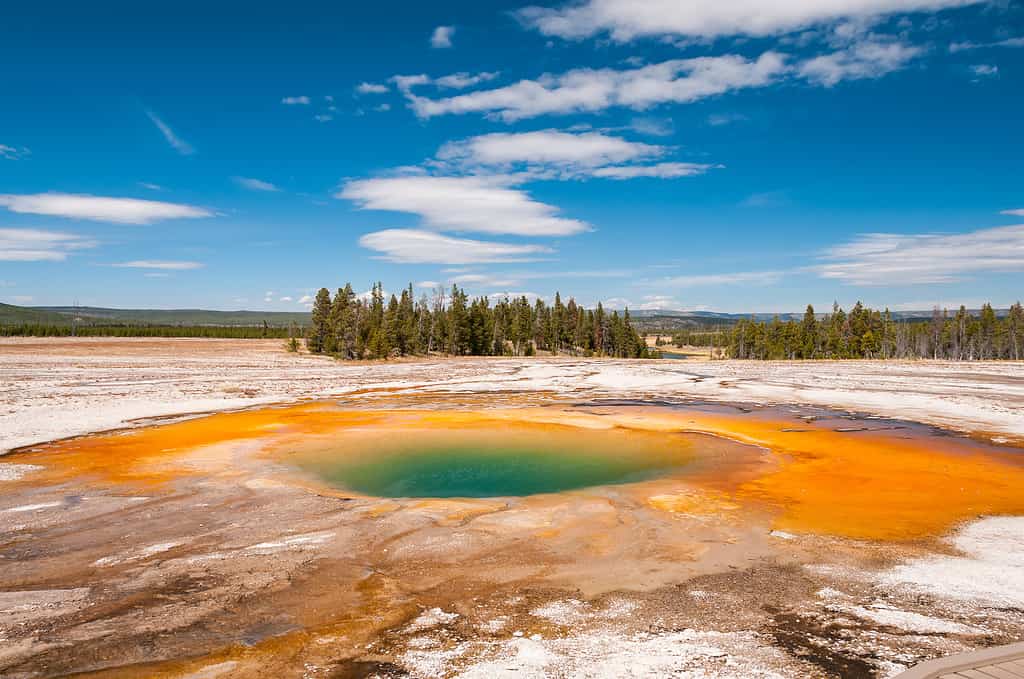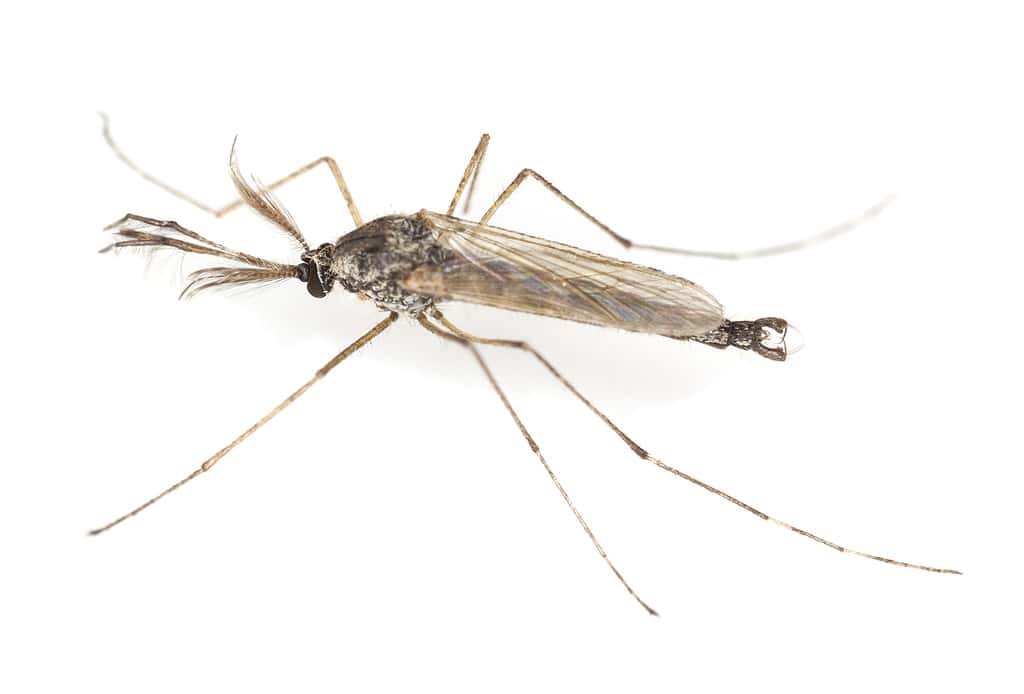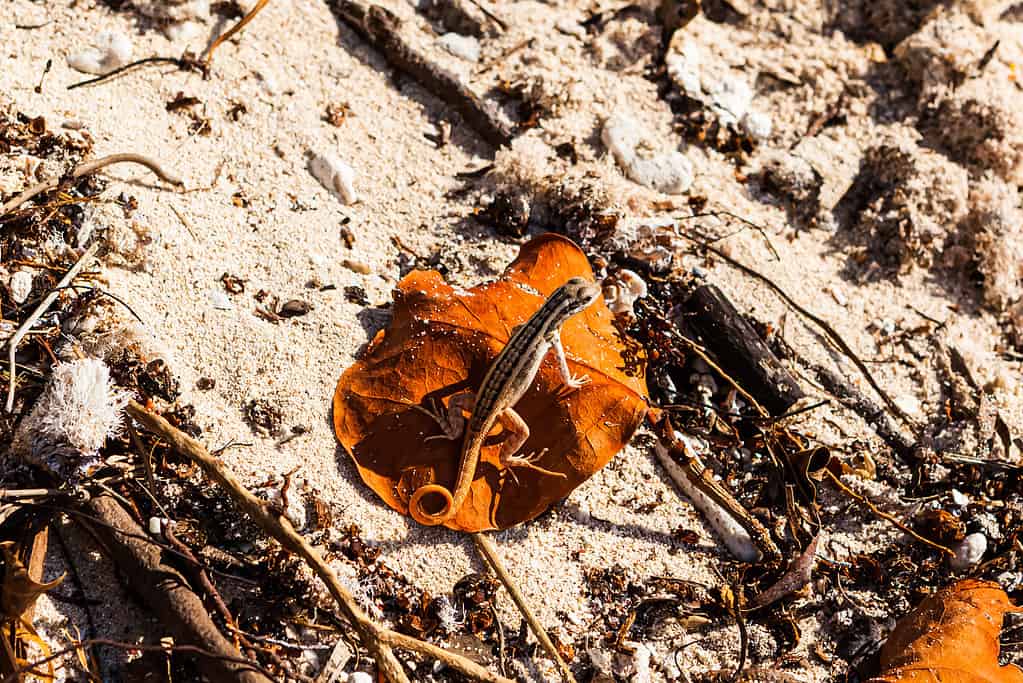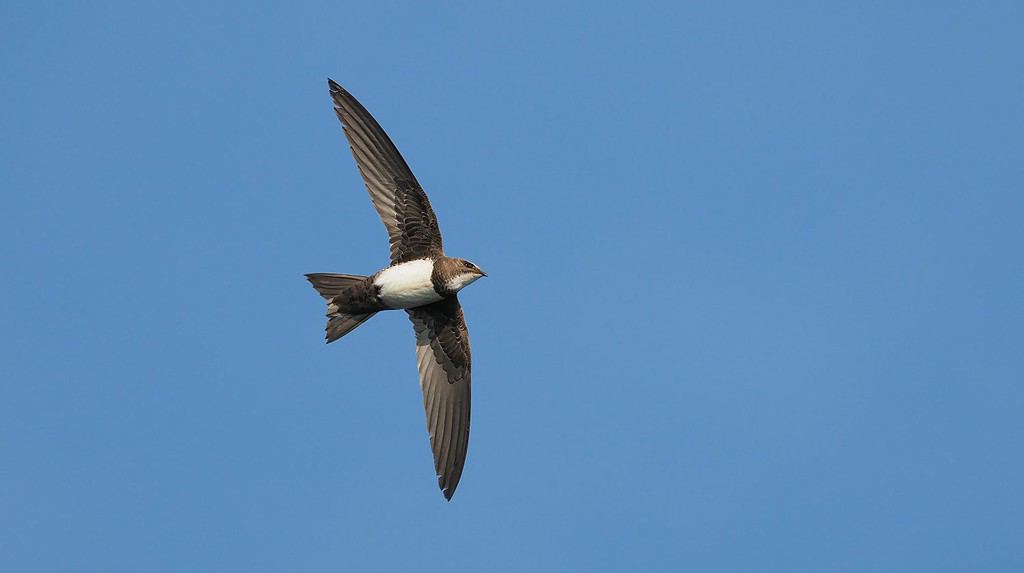Boiling Lake is a natural wonder located in Morne Trois Pitons National Park in Dominica. It’s very close to a magma chamber, which is located underneath it. Therefore, the lake is constantly bubbling and boiling. As you might imagine, chemicals and other substances also regularly seep into the lake, making it toxic.
This lake is the second-largest hot spring in the world, but it isn’t the kind of hot spring where you take a dip. It regularly reaches temperatures of up to 194°F.
However, despite seeming inhospitable to life, quite a few lifeforms live in Boiling Lake. Here are some of the most common ones:
1. Thermophilic Bacteria

All these organisms are also found in other hot springs, like those in Yellowstone National Park.
©1Tomm/iStock via Getty Images
This microscopic organism thrives in the hot, sulfur-rich waters of the lake. They are the crucial organisms in the lake, breaking down organic matter and converting it into energy. Other organisms in the lake use this energy. Without these bacteria, much of the other life wouldn’t be able to survive.
They use heat-resistant enzymes to break down complex molecules at high temperatures in the water. They also have a unique cell membrane that can function in the boiling climate.
These are diverse bacteria. They come in various shapes and sizes. Think of them more as a group of bacteria than a specific kind.
Thermophilic bacteria also play a crucial role in the sulfur cycle, converting hydrogen sulfide gas into usable forms.
2. Extremophile Archaea

Boiling Lake is home to very few organisms, but most fall into this category.
©iStock.com/pabst_ell
These organisms are very similar to thermophilic bacteria. They’re single-celled organisms that can withstand the boiling conditions in the lake. They’re also thought to be some of the earliest life forms on Earth, once surviving the boiling oceans.
Once again, this is a type of organism – not a specific find. It includes several types, such as Methanogens, Halophiles, and Thermoacidophiles. Each of these is adapted to the hot climates of the lake thanks to their unique cell walls that protect them from harsh environments.
They use different molecules than most organisms for energy production, allowing them to thrive in the hot waters. They also have very efficient water management, which is useful when all the water literally boils away.
These organisms play important roles in various biogeochemical cycles, like methane production and sulfur oxidation.
3. Heat-loving Insects

Small flies can be seen around the lake, as well.
©Henrik Larsson/iStock via Getty Images
A few heat-loving insects, such as flies and beetles, live in the steamy vents around the lake. These insects are adapted to the heat thanks to their unique body structures.
For example, midge flies lay eggs around the hot springs. Their larvae love the warmth, allowing them to thrive in the warmer climate. Some beetles from the family Scirtidae inhabit the wet areas around the vents, which are warm but not boiling.
Many bugs seek shade and use cooling water droplets to stay cool in the boiling atmosphere around the vets. They also develop quickly thanks to the heat, allowing them to thrive better in the harsh environment. Because they can breed faster, they don’t have to survive as long as other bugs.
These bugs contribute to the food chain by providing prey for other organisms. Their decaying bodies also add nutrients to the lake for the bacteria and microorganisms above.
4. Dominican Ground Lizards

Small lizards can be found around the lake, which they use to stay warm.
©Anton Klyudt/iStock via Getty Images
The most well-known inhabitants around Boiling Lake are the Dominican ground lizard. These small and brown lizards can be found sunning themselves on the rocks around the lake. Here, the temperature can reach over 140°F.
Like all lizards, they are cold-blooded, so they use the heat from the lake to stay warm. They spend limited time in direct sunlight and much less time sunbathing than other lizards, as the warmth from the lake allows them to get very warm very quickly. They also feed on insects around the lake, but it isn’t odd for them to venture off in search of food.
These lizards help control the insect population and add nutrition to the lake for the microorganisms we discussed previously.
5. Birds

Swifts can be seen flying around the air near the lake, where they can take advantage of the air currents.
©Toni Genes/Shutterstock.com
Of course, birds do not live in the lake directly. However, some birds frequent the lake to find lizards and other sorts of food. Some heat-loving birds may utilize the air current to save energy when rising. Instead of flapping, they can use the air currents to rise into the sky.
The most common birds around the lake are swifts, swallows, and other small birds. However, you can see almost any bird native to the area flying above the lake.
The photo featured at the top of this post is © Joseph Thomas Photography/iStock via Getty Images
Thank you for reading! Have some feedback for us? Contact the AZ Animals editorial team.







